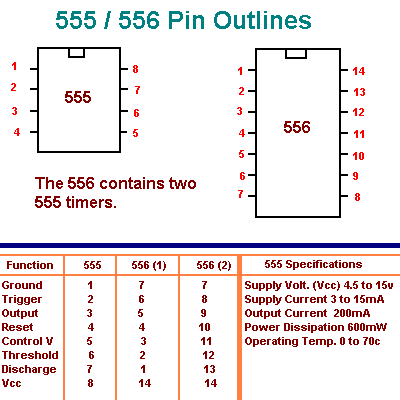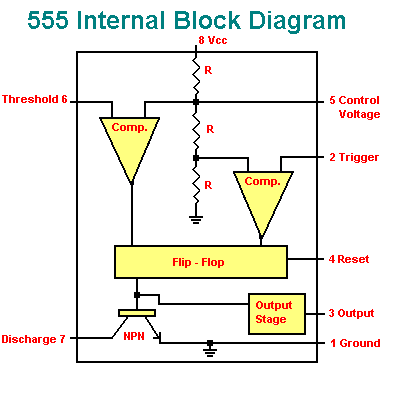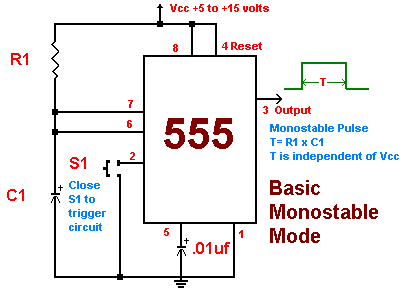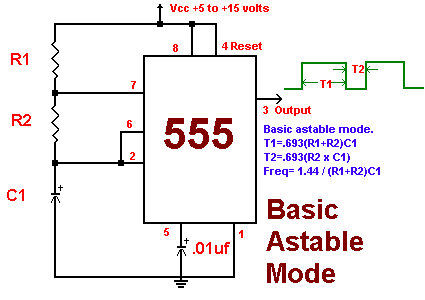555 Timer Theory & Design
The 555/556 timer is one of the most versatile and popular chips made. It is very inexpensive and easy to use. There are two basic modes of operation. 1: Monostable Mode and 2: Astable Mode. In the monostable mode the 555 acts as a "one - shot". It would be used for the purpose of obtaining a one pulse of variable length. In the astable mode the 555 will retrigger itself to output a stream of pulses of variable length. Basic information about the timers are shown below.


Monostable Mode
In the basic monostable mode the timer will be triggered by applying a negative pulse to pin 2. That will cause the output of the timer to output a pulse on pin 3 for a time period determined by the values of R1 and C1 in the circuit below. The supply voltage has no effect on the length of the pulse. The formula to determine the duration of the output pulse is as follows T = R1 x C1. For example if R1= 100k ohms and C1= 10uf then the length of the pulse would be 1 second. Typically circuit designers already know what the length of the pulse is going to be, they would then need to calculate the values of R1 and C1. In this case we will have to pick a value for either R1 or C1 and then calculate the value of the other component. To obtain a 10 second timing pulse we will use a 100k ohm resistor for R1 and calculate C1's value. C1 = T / R1. C1 = 100uf. To calculate the value of R1 when the value of C1 is known the formula would be R1 = T / C1.

Astable Mode
In the astable mode of operation pin 2 and 6 are tied together to cause the timer to retrigger itself. The output pulse is on pin 3. The output pulse is shown in the diagram below. To calculate the T1 time (output high) use the following formula T1 = .693(R1 + R2)C1. To calculate the T2 time (output low) use the formula T2 = .693( R1 x C1 ). If you need to know the frequency of the output use this formula Freq. = 1.44 / (R1 + 2R2)C1.
Sourse:www.home.maine.rr.com






